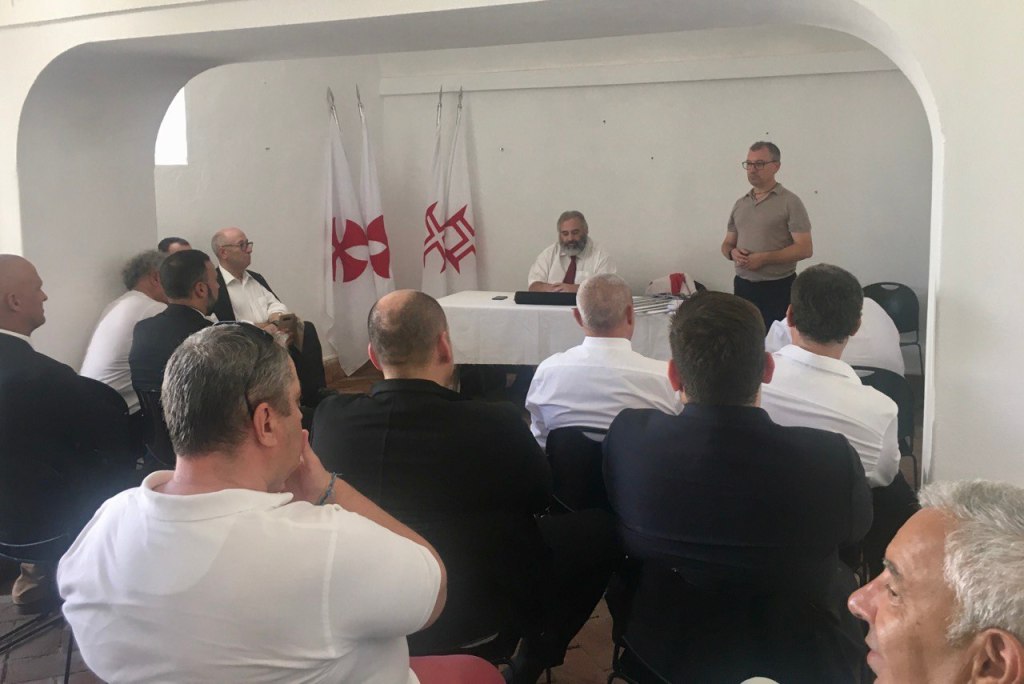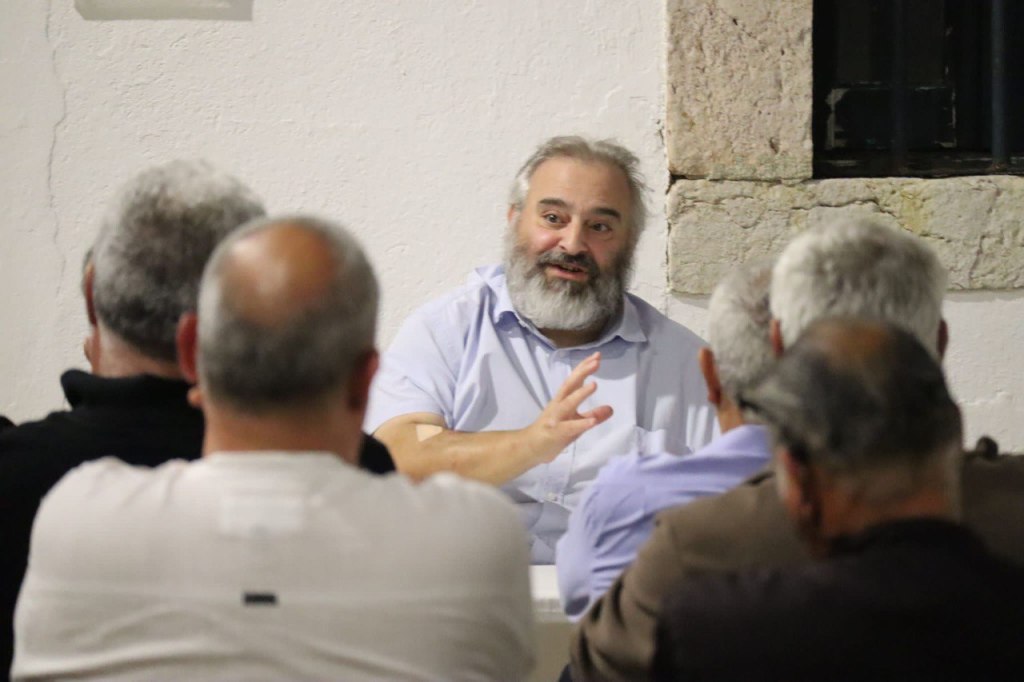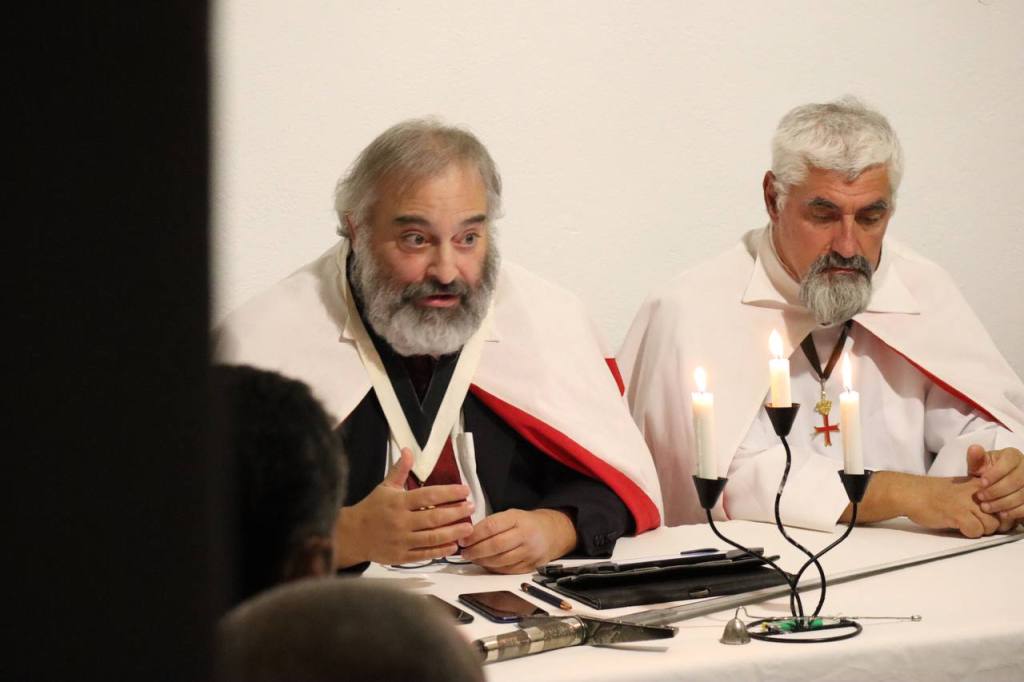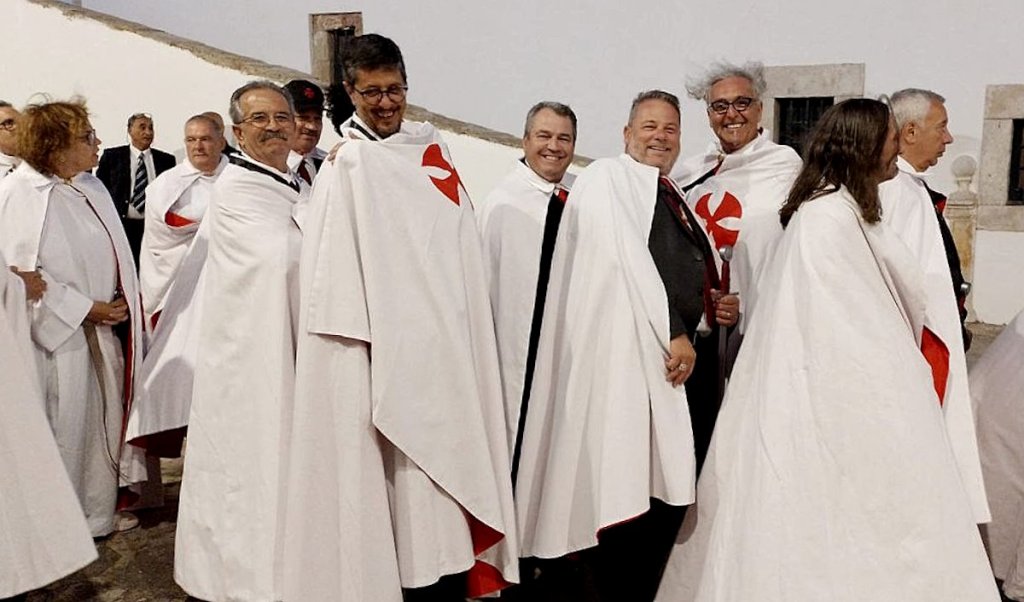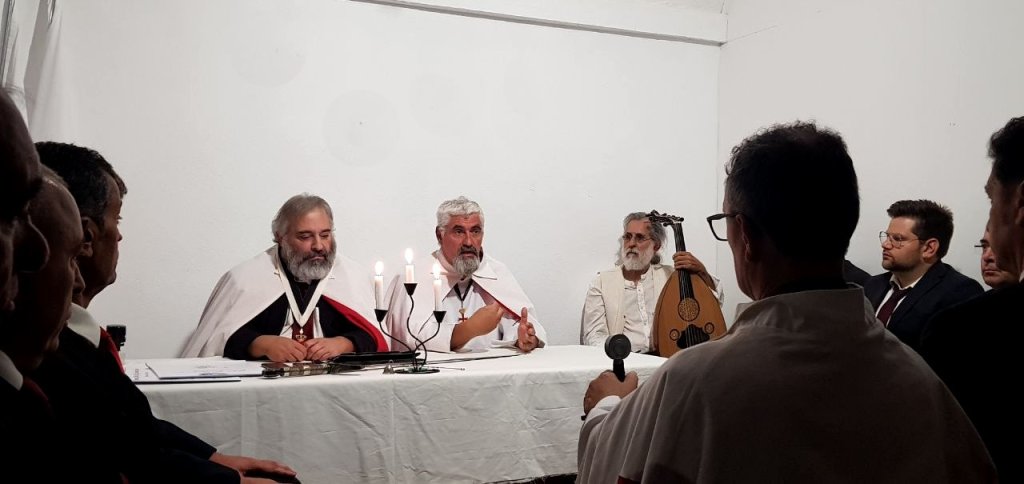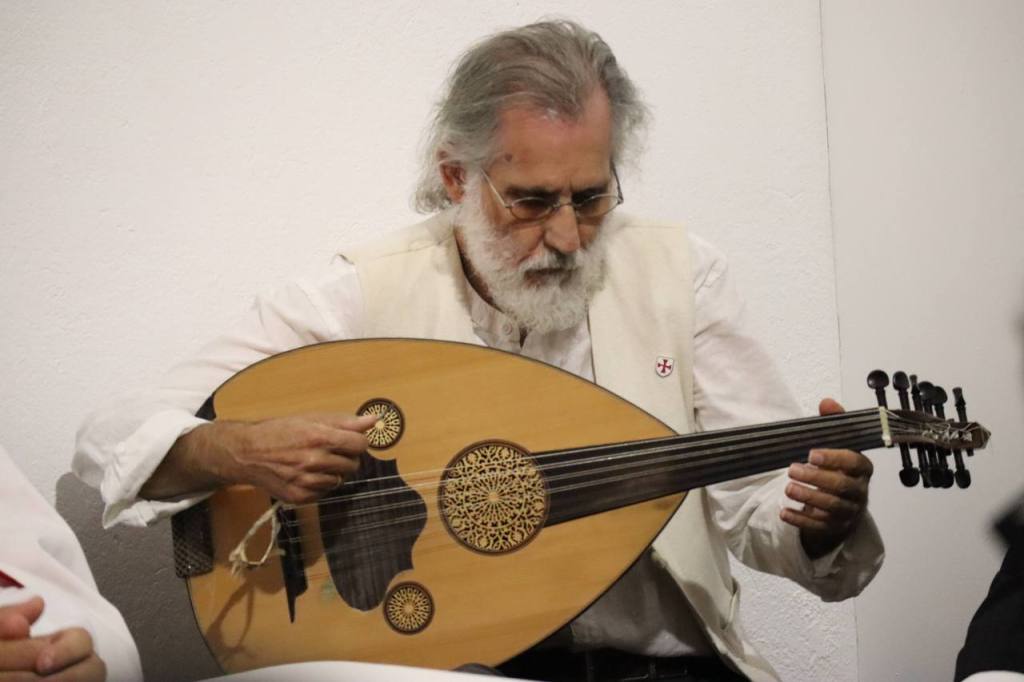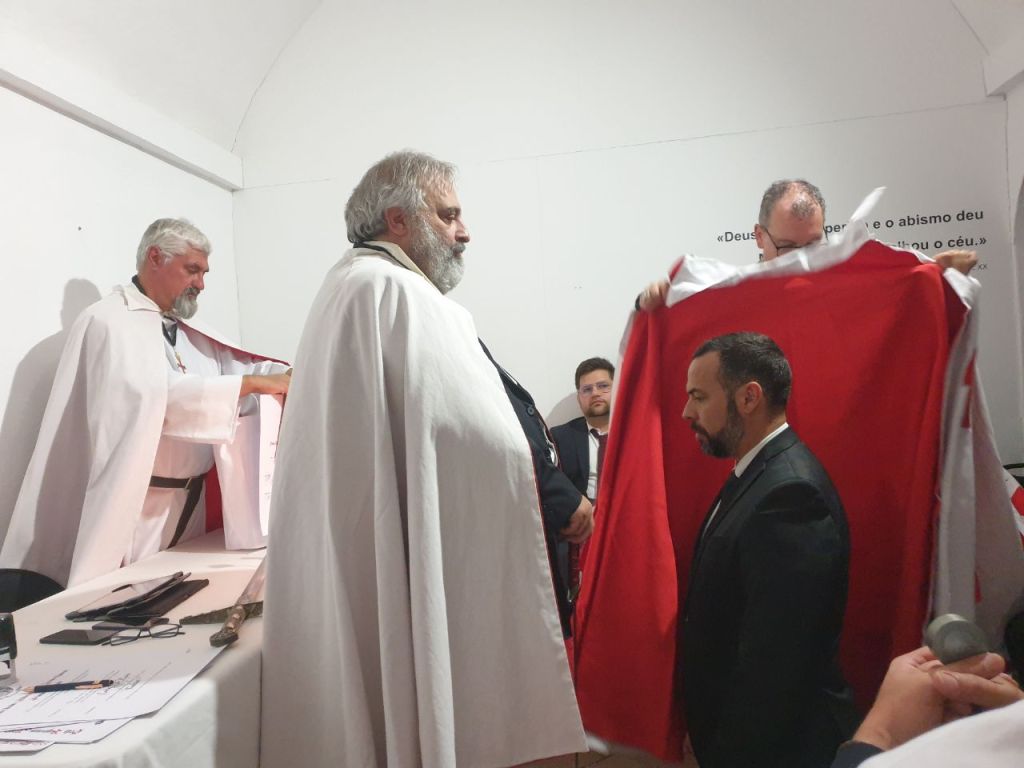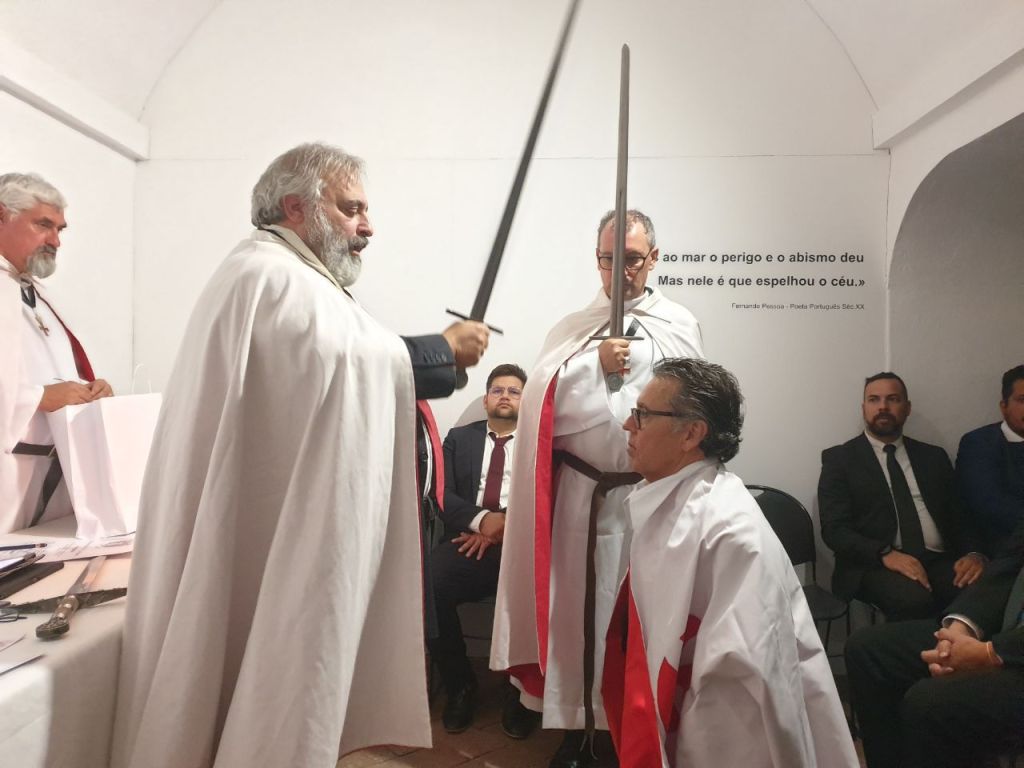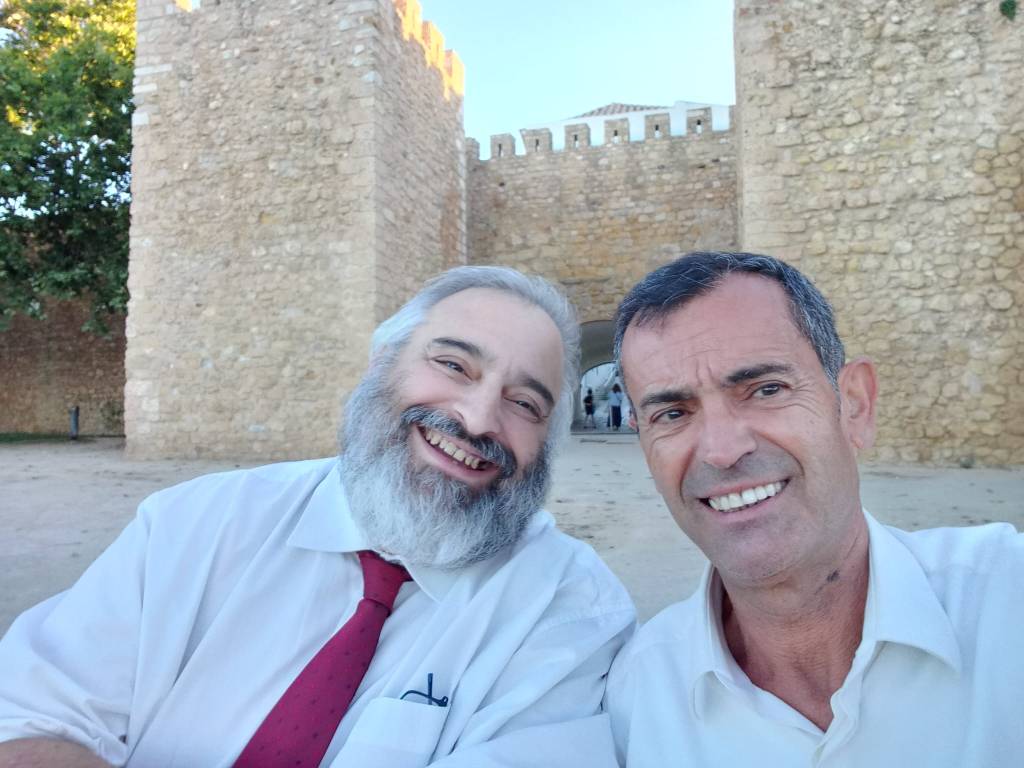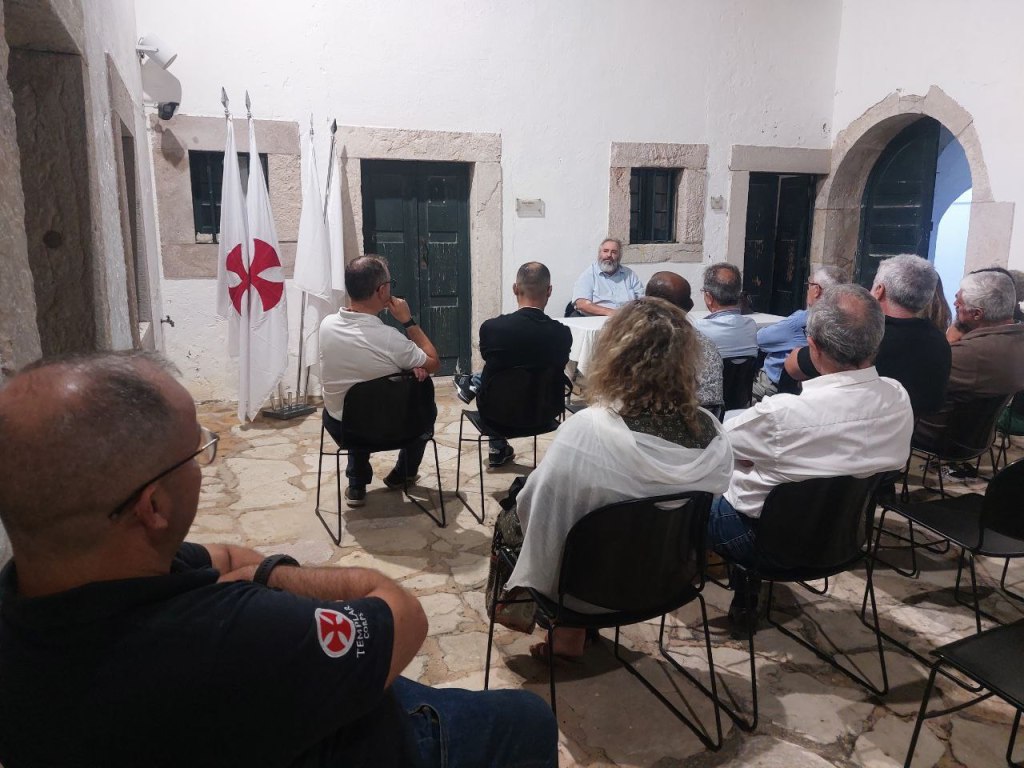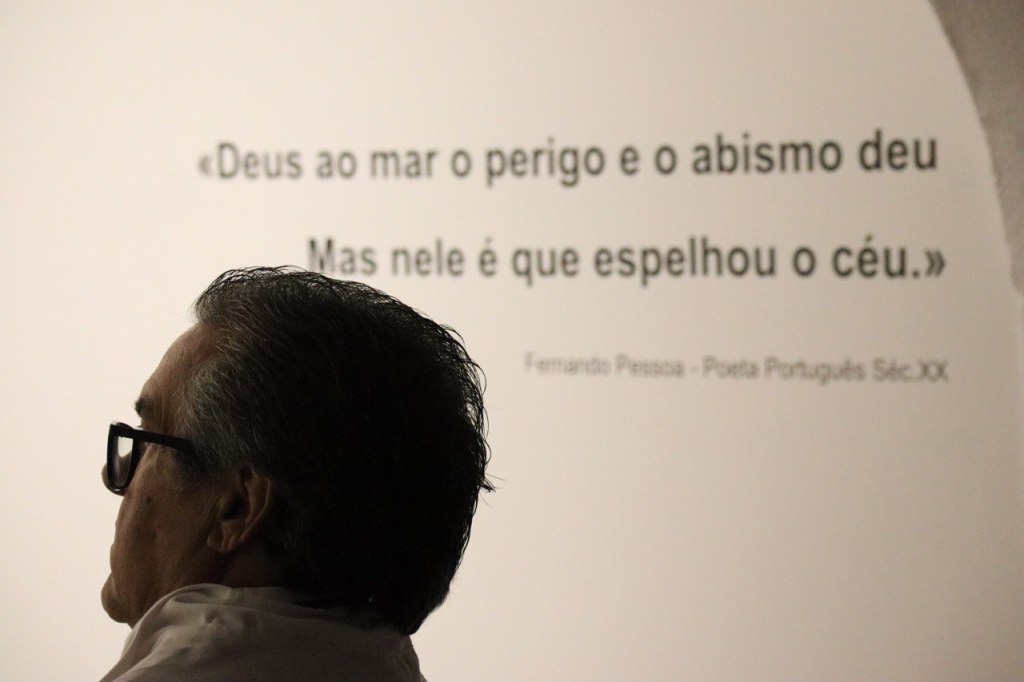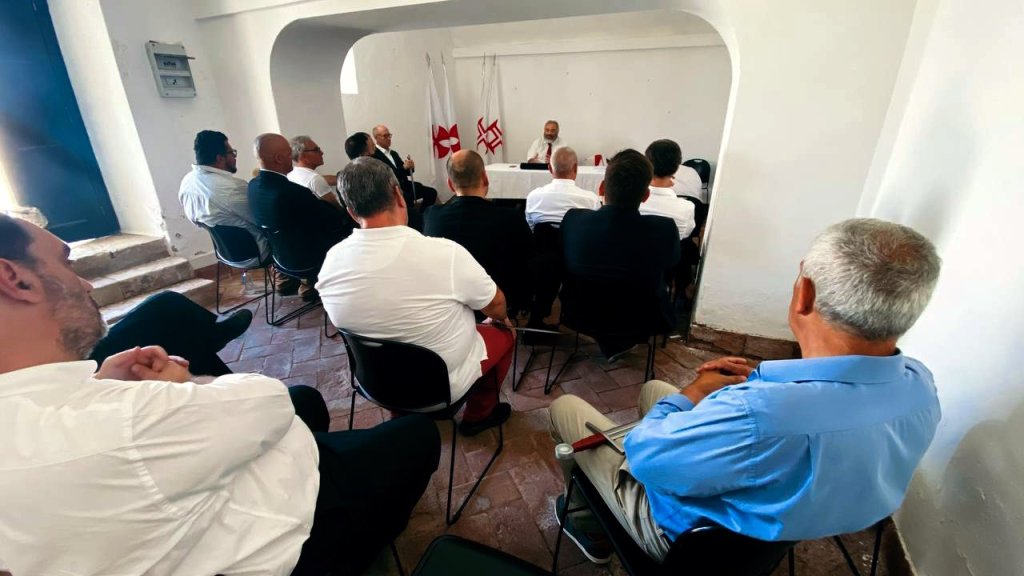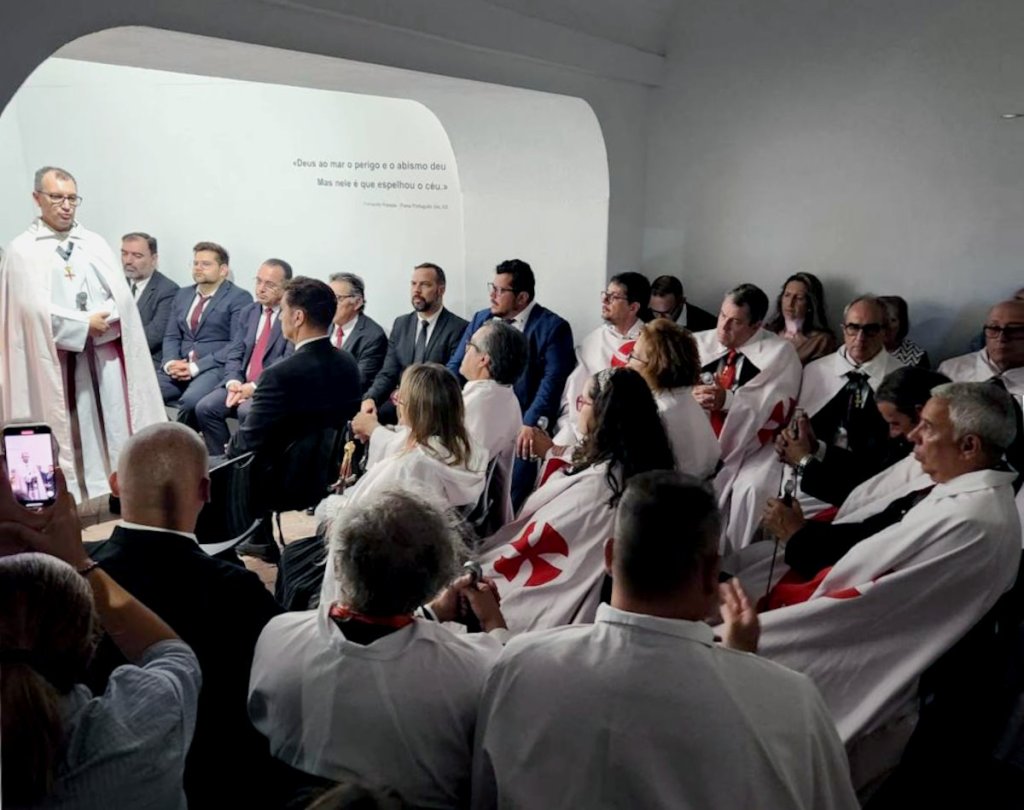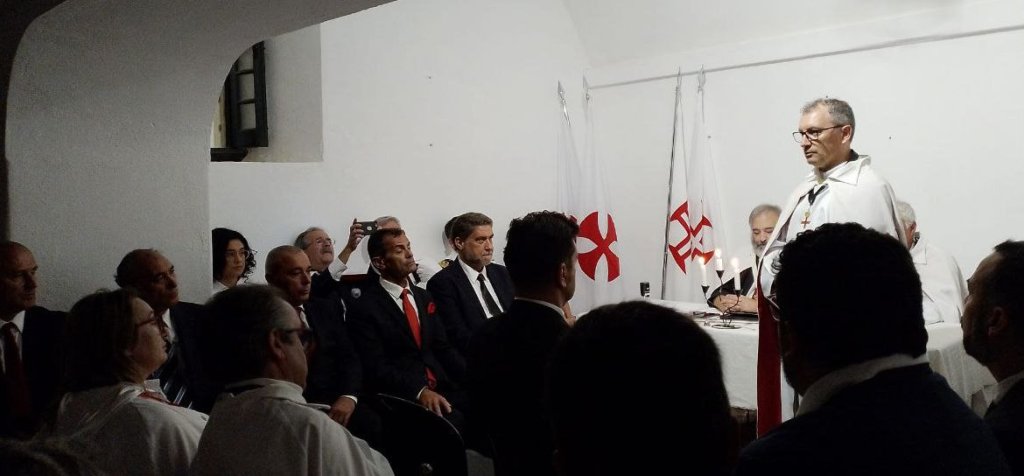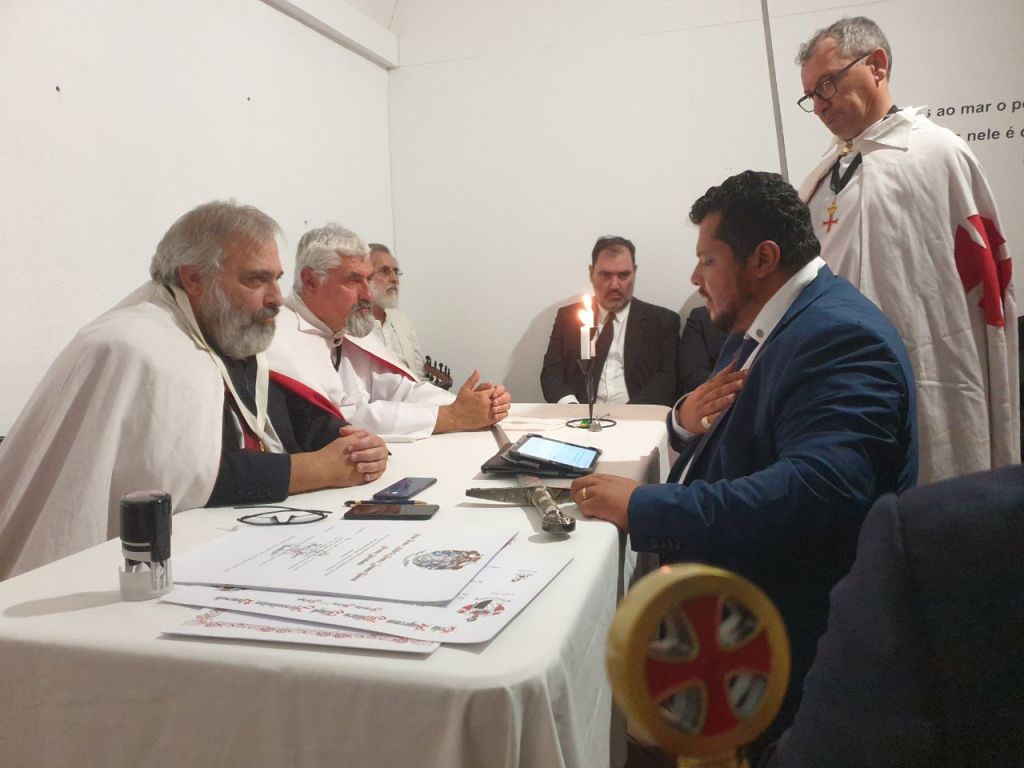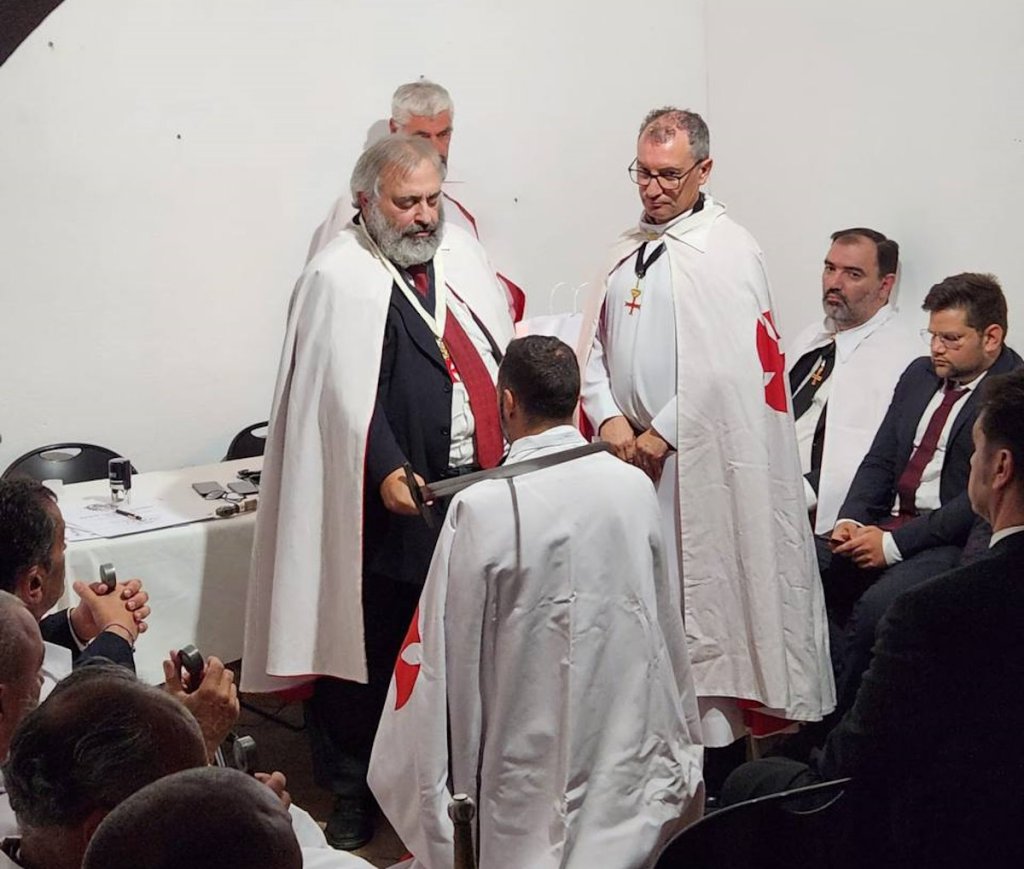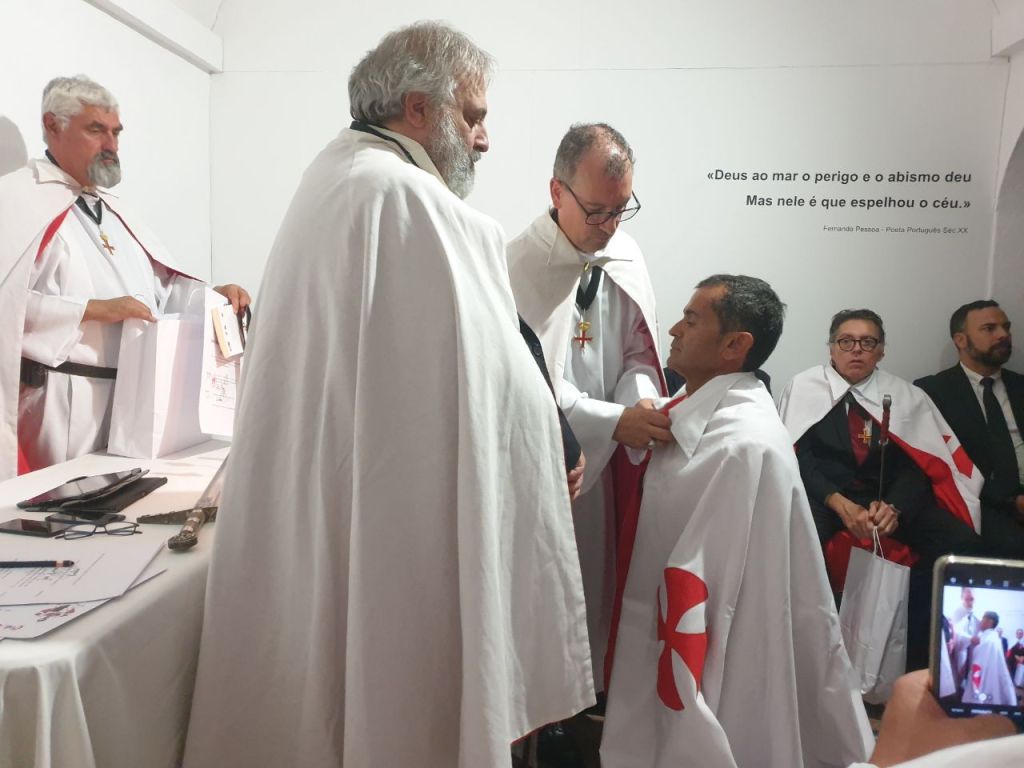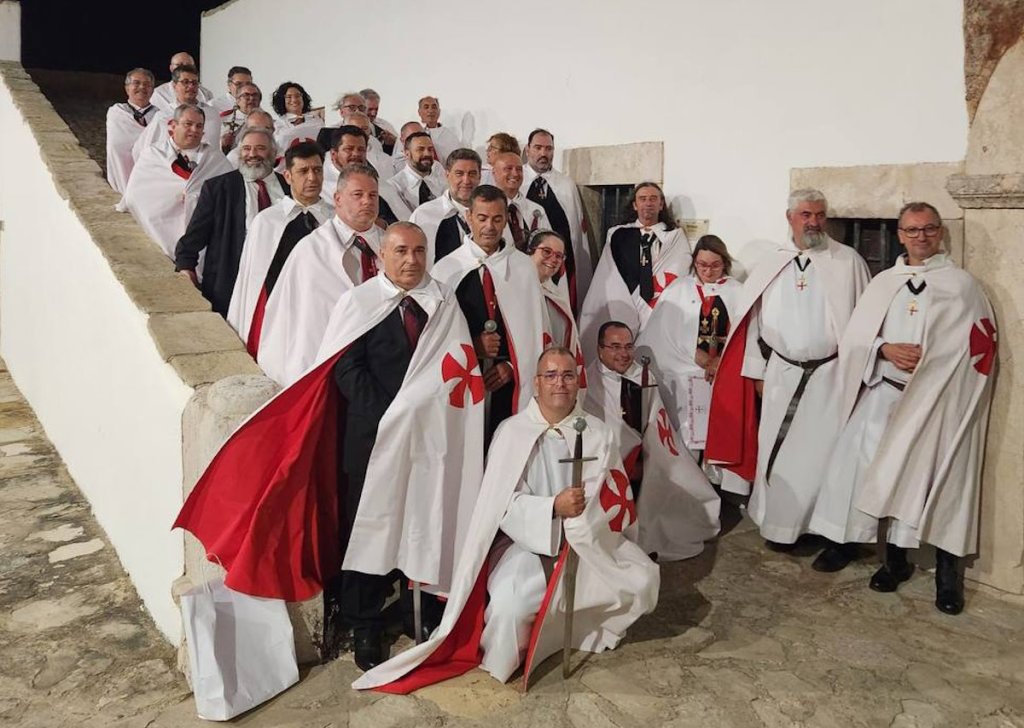
Their code of conduct was designed to keep the warrior-knights humble, chaste and—most of all—obedient.
How often do we get a nitty-gritty view into the daily life of a medieval knight—one based on fact and not misty mythology?
The Templars, founded in 1119 as a band of poor, pious knights, have been romantically reimagined in art, literature, film and folklore for centuries. The fact that they were shockingly villainized and disbanded in 1307—after a dizzying rise to wealth and power—only added to their legendary mystique.
But the brotherhood did leave its share of concrete historic record. Perhaps most fascinating: “The Rule of the Templars,” which outlined a detailed code of conduct governing every aspect of daily life, including clothing (spartan), meals (mostly silent), sleeping arrangements (austere), social restrictions (ample). There’s a good-sized section on penance, which was especially important for maintaining the order’s all-important discipline. The first draft, composed in 1129, dictated 68 rules designed to keep Templar knights on a tight leash, reflecting their vows of poverty, chastity and especially obedience. As the order grew bigger, more wealthy and more militarized, its disciplinary code expanded to several hundred rules and became increasingly complex.
Written in Latin and French by various authors over the course of a century and a half, the original rules documents no longer exist. But they are known through subsequent translations.
And what happened to knights when the rules weren’t followed? According to the code, comeuppance ranged from corporal punishment to losing one’s habit (knight’s robes) to banishment from the brotherhood. Lesser infractions sometimes required the sinner to eat his meals on the floor.
Below, a few of the more notable Templar rules:
MEALTIME
Two to a bowl
*Because of the shortage of bowls, the brothers will eat in pairs, so that one may study the other more closely, and so that neither austerity nor secret abstinence is introduced into the communal meal. And it seems just to us that each brother should have the same ration of wine in his cup.
Meat in moderation
*It should be sufficient for you to eat meat three times a week, except at Christmas, All Saints, the Assumption, and the feast of the twelve apostles. For it is understood that the custom of eating flesh corrupts the body.
No leaving the table—unless it’s a real emergency
*If the brothers are eating at table and any of them suffers a nosebleed, or the war cry is raised, or there is a fire or the horses are unsettled, to avoid harm to the house, they may get up from the table without permission, for all these things, and then return to eating at the table if they wish.
When in the proverbial doghouse, eat on the floor
*While a brother is on penance…when he eats, he should sit on the ground before the household.
Napkin use: It’s complicated
*On Good Friday, all the brothers should fast on bread and water and eat without a napkin; moreover, the tables should be washed before the bread is put on them; and brothers of the Temple should eat without a napkin on no other day unless it is in penance on the floor, for then should eat on a piece of his mantle and without a napkin.
FASHION WITHOUT FINERY
Wearing chastity on your sleeve
*All brothers’ habits should always be of one color, that is, white or black or brown. And we grant all knight brothers in winter and in summer, if possible, white cloaks…so that those who have abandoned the life of darkness will recognize each other to being reconciled to their creator by the sign of the white habits: which signifies purity and complete chastity.
Keeping it humble
*These robes should be without finery and without any show of pride…No brother will have a piece of fur on his clothes…And if any brother out of feeling of pride or arrogance wishes to have as his due a better and finer habit, let him be given the worst.
Forbidden footwear
*We prohibit pointed shoes and shoe-laces and forbid any brother to wear them… For it is manifest and well known that these abominable things belong to pagans.
Warm-weather alternatives
*Among the other things, we mercifully rule that, because of the great intensity of the heat which exists in the East, from Easter to All Saints, through compassion and in no way as right, a linen shirt shall be given to any brother who wishes to wear it.
The well-dressed head
*No brother may wear a hood on his head. No brother may wear a coif without a cloth cap.
Of horses, humility and hand-me-downs
*We utterly forbid any brother to have gold or silver on his bridle, nor on his stirrups, nor on his spurs. If it happens that a harness is given to him in charity which is so old that the gold or silver is tarnished, that the resplendent beauty is not seen by others nor taken pride in them: then he may have them.
Take care of it…or lose it
*No brother should hang his mantle round his bed on hooks, for each brother is obliged to honor his habit.
*If a brother tears or gives back his habit willingly, he should not recover it for a year and a day.
BEST TO PRETEND THAT WOMEN DON’T EXIST
Watch out for the ladies
*The company of women is a dangerous thing, for by it the old devil has led many from the straight path to Paradise. Henceforth, let not ladies be admitted into the house of the Temple, that is why, very dear brothers, henceforth it is not fitting to follow this custom, that the flower of chastity is always maintained among you.
Even mom and dear aunt Heloise
*We believe it to be a dangerous thing for any religious to look too much upon the face of woman. For this reason none of you may presume to kiss a woman, be it widow, young girl, mother, sister, aunt or any other; and henceforth the Knighthood of Jesus Christ should avoid at all costs the embraces of women, by which men have perished many times, so that they may remain eternally before the face of God with a pure conscience and sure life.
They meant it
*If a brother is found guilty of lying with a woman, and we hold guilty the brother who is found in a wicked place or in a wicked house with a wicked woman, he may not keep the habit and so he should be put in irons, nor shall he ever carry the piebald banner or take part in the election of a Master.
Don’t even talk about the fairer sex
*We prohibit and firmly forbid any brother to recount to another brother nor to anyone else….the pleasures of the flesh that he has had with immoral women; and if it happens that he hears them told by another brother, he should immediately silence him; and if he cannot do this, he should straightaway leave that place and not give his heart’s ear to the pedlar of filth.
Kids? Avoid them too
*We forbid all brothers henceforth to dare to raise children over the font and none should be ashamed to refuse to be godfathers or godmothers; this shame brings more glory than sin.
IT’S THE MASTER’S WORLD, AND A BROTHER IS JUST LIVING IN IT.
Jesus hearts a well-behaved brother
*In order to carry out their holy duties and gain the glory of the Lord’s joy and to escape the fear of hell-fire, it is fitting that all brothers who are professed strictly obey their Master. For nothing is dearer to Jesus Christ than obedience.
Master, may I have a bath?
*No brother may bathe, let blood, take medicine, go into town or ride a horse without permission.
On a tight leash…even for small adjustments
*No brother may shorten his stirrup leathers, nor his girth, nor his sword belt, nor his breech-girdle without permission; but he may adjust his buckle without permission.
Ask first before using straps
*No brother should carry his hauberk (chainmail tunic) or his iron hose in a bag, neither in a guarelle nor in a profinel, but he should carry it in a leather or wire mesh bag; moreover, he should not hang the wire mesh bag by the straps in order to carry his hauberk, but he should carry it in his hand for as long as he or a sergeant can each hold it; and with permission he may hold it or hang it by the straps.
Careful with that gear
*No brother may throw his lance without permission, nor may he repair his sword without permission, nor his chapeau de fer (wide-brimmed helmet), nor his coat of mail, nor throw his chapeau de fer.
Here today…gone tomorrow…deal with it
*The Master shall give to whomsoever he pleases the horse and armor and whatever he likes of another brother, and the brother to whom the given thing belongs should not become vexed or angry: for be certain that if he becomes angry he will go against God.
Keeping outside influences at bay
*Without the consent of the Master or of his commander, let no brother have letters from his relative or any other person; but if he has permission, and if it please the Master or the commander, the letters may be read to him.
Poverty isn’t just a concept
*None may carry or keep money without permission. When a brother asks any brother…for money to buy something, he should buy as soon as possible that for which he asks it, and he may not buy anything else without permission.
You can’t take it with you anyway
*If it happens that a brother dies, and money is found on him, in his habit or night clothes or in his pouch, it will be considered his and stolen. And these wicked brothers should not be buried with the other good brothers who have gone from this world, nor should they be placed in hallowed ground, and the brothers are not obliged to say paternosters for them, nor to perform the office that they should perform for a dead brother; but they should have him buried like a slave.
Fixer-uppers okay
*If a brother builds a new house of stone or lime without the permission of the Master or of the Commander of the Land, the habit is at the discretion of the brothers, whether to take it from him or let him keep it. But other ruined houses he may repair without permission.
SLEEPING
Beware brothers in the dark
*And if possible, the house where they sleep and take lodging should not be without light at night, so that shadowy enemies may not lead them to wickedness, which God forbids them.
Expect major penance…
*If a brother is tainted with the filthy, stinking sin of sodomy, which is so filthy and so stinking and so repugnant that it should not be named.
Maybe it’s best to bundle up at bedtime
*You should always sleep in a shirt and breeches and in woolen hose, and belted with a small belt; and you should have on your bed three pieces of linen, that is to say a bag in which to put straw and two sheets, and in place of one sheet you may have a light blanket if the Draper wishes to give it to you.
THE WELL-BEHAVED WARRIOR
Charge in battle only with a commander’s say-so
*If a brother who is in battle charges without permission, and harm comes of it, the habit is at the discretion of the brothers, whether to take it from him or let him keep it. But if he sees a Christian in peril of death, and his conscience tells him that he can help him, he may do so. But in no circumstances should a brother of the Temple charge without permission.
Beware banner infractions
*If a brother of the Temple who carries the banner in battle lowers it in order to strike, and no harm comes of it, the habit is at the discretion of the brothers, whether to take it from him or let him keep it. And if he strikes with it and harm comes of it, he may not keep his habit, and so it may be decided to put him in irons; he may never carry the banner or be a commander in battle
Save a life? Fine, keep quiet
*And if it happens by chance that any Christian acts foolishly, and any Turk attacks him in order to kill him, and he is in peril of death, and anyone who is in that area wishes to leave his squadron to help him, and his conscience tells him that he can assist him, he may do so without permission, then return to his squadron quietly and in silence.
ON THE ROAD
Holy relics need special attention
*When the True Cross is transported by horse, the Commander of Jerusalem and the ten knights should guard it day and night, and should camp as near to the True Cross as they can for as long as the journey lasts; and each night two brothers should keep watch over the True Cross; and if it happens that camp is established, everyone should lodge with the convent.
Staying within bell range
*When the brothers are in camp they should not go out for pleasure without permission, except as far as they can hear the call or the bell, nor even to their dwellings, except as far as they can hear the bell. Nor may they even carry any baggage on their horses, near or far, without permission.
No rogue hunting
*And let it be known that the brother should not search for any food except what is given communally, except green vegetables from the fields, or fish if they know how to catch them themselves, or wild animals if they know how to take them without hunting, in such a way that they do not transgress the commandments of the house.
Share with your neighbor
*Each brother may give some of the food in front of him to the other brothers around him, as far as he can stretch his arm, but no farther; and always he who has the best should invite the one who has the worst.
GENERAL DEMEANOR
A head held high
*Each brother should strive to live honestly and to set a good example to secular people and other orders in everything, in such as way that those who see him cannot notice anything bad in his behavior, not in his riding, nor in his walking, nor in his drinking, nor in eating nor in his look, nor in any of actions and work. And especially should each brother strive to conduct himself humbly and honestly when he hears the office of Our Lord.
Brothers should be seen…
*When the brothers come out of compline (night prayers) they have no permission to speak openly except in an emergency. But let each go to his bed quietly and in silence.
Stick it out at chapel
*Each brother is required to hear the hours in their entirety, and no brother should leave the chapel until these hours are finished, except for a task which he cannot avoid, or if he goes in search of the one who has the place next to him in the chapel, whom he should seek if he has not come when the office is begun, and so he should look for him at least in his bed or with his horses.
OF SLAVES AND SQUIRES
Note to squires: Be charitable
*To each knight brother we grant three horses and one squire, and if that squire willingly serves charity, the brother should not beat him for any sin he commits.
Beat, yes; maim, no
*No craftsman brother, neither one from the prison, nor any other, should strike a slave in such a way that he places irons round his neck without permission, if he has deserved it; none should should put him in a pillory nor pierce him with a sword without permission; but he should beat him and may without permission with a leather strap if he has deserved it, but he should take care not to maim him.
PASTTIMES
Gambling (without money, of course)
*None should place a wager, not on a horse nor anything else, except an arrow without iron, or anything else which does not cost him or anyone else money, like an open lantern, or wooden mallet, or camping or tent pegs….And each brother of the Temple may wager against another brother, with his crossbow, ten pieces of candle without permission, but no more.
Board games banned
*No brother should play chess, backgammon or eschaçons.
CHARITY
The paupers’ feet
*Wherever the Master is on Maundy Thursday (the Thursday before Easter), he should wash the feet of 13 paupers, and should give to each of them shirt and breeches, two loaves of bread, two deniers and a pair of shoes. And if he is in a place where he does not have them, when he comes to the first of the house of the Temple where he has them, he should give them, for love of God.
Clean them til they’re kissable
*And the brother should wash the paupers’ feet and dry them with the towels, and afterwards kiss their feet humbly. And let it be known that the Almoner should ensure that those paupers who are to be washed do not have any vile disease on their feet or legs; for perhaps it could bring illness to a brother’s body.
INFRACTIONS AND PENANCE
Taking to the floor
*Of all the brothers who are given a penance in the presence of the Master, none may rise from the floor unless he is raised by him; and the brothers may pardon them from manual labor and fasting, but may not raise them from the floor and Friday fasting.
Toe the line or else
*If a brother refuses to carry out the commandment of the house and persists in the folly and does not wish to carry out the commandments he has been given, the habit should be taken from him and should be put in irons.
No cross for you!
*When a brother is on penance….he should work with the slaves, and when he eats he should sit on the ground before the household and eat of their food, and always wear a cope (heavy hooded cloak) without a cross.
Hands off the brothers
*If a brother lays his hands on another brother out of anger or wrath, he should not keep his habit; and if the blow is serious, he may be put in irons.
Or a fellow Christian
*Whoever strikes a Christian man or woman with a sharp weapon, or with a stone or staff, or anything a blow from which could kill or wound him, the habit is at the mercy of the brothers.
Going AWOL
*If a brother leaves the house and sleeps two nights outside the house, he loses his habit, and he may not recover it for a year and a day. And if he keeps the things which are forbidden, more than two nights, he is expelled from the house.






